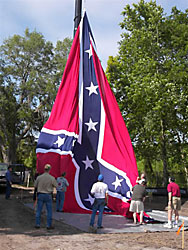August 6, 2008
Written by C.N.
Illegal Immigrant Murdered: Are Racial Tensions Getting Worse?
In one of my recent posts, entitled “Racial Tensions and Living in a Colorblind Society,” I commented on how the economic recession and larger social/economic forces associated with globalization have resulted in many Americans struggling and feeling besieged by current events:
As Americans, particularly White Americans, continue to economically struggle as we enter a recession and as they culturally struggle with maintaining their exclusive hold on the “American identity†while demographic shifts take place all around them, their fear, frustrations, and anger will inevitably boil over and verbal and physical attacks on convenient scapegoats such as Asian Americans will continue.
I also predicted that racial/ethnic tensions are likely to get worse before they get better. Unfortunately, as the New York Times reports, the recent death of an illegal immigrant in Pennsylvania seems to represent how these rising tensions have led to physical violence and murder:
Mr. Ramirez, 25, who had been in the country illegally for six years, picking crops and working in factories, died July 14 from head injuries received two days earlier. Investigators said he had gotten into a fight with a group of teenage boys — most or all of them members of the town’s high school football team, the Blue Devils — who left him unconscious in a residential street, foaming at the mouth.
Exactly what happened during the fight is still hotly debated . . . with some saying it was just a street fight that went bad, and others claiming the teenagers singled out a Mexican immigrant for a beating and made anti-Mexican remarks. Since Mr. Ramirez’s death, this town of 5,600 has been bitterly divided over the case, illuminating ethnic tensions that surprised town leaders. . . .
“For many Latinos, this is a case of enough is enough,†said Gladys Limón, a staff lawyer for the Mexican American Legal Defense and Educational Fund. “And it can help us get attention to the wider issue that this is happening all over the country, not just to illegal immigrants, but legal, and anyone who is perceived to be Latino.â€
Of course, defendants of all races/ethnicities are presumed innocent until proven guilty in a court of law. However, the circumstances here seem to paint a clear picture of racial/ethnic tensions, probably combined with economic and cultural insecurity, providing the fuel to ignite a physical confrontation that ultimately led to Mr. Ramirez being beaten to death at the hands of three teenagers who apparently had been drinking and, by virtue of playing on a football team, are used to using physical violence to achieve personal gratification and community status.
What also strikes me is that the article states that town leaders have been surprised at how this murder has exposed ethnic tensions in their town. Why were they surprised when in fact, this town had drafted laws similar to that of their state neighbor Hazelton, that would have severely limited the rights and access of illegal immigrants to basic public resources, such as housing, jobs, and education.
As they say, denial is not just a river in Egypt.
Unfortunately, Mr. Ramirez’s murder is another example of economic competition and feeling culturally threatened leading to racial/ethnic hostility. As sociologist will tell you, throughout American history, we’ve seen this pattern over and over and over again. In its relatively “mild” state, it may take the form of a resurgent acceptance of the confederate flag, as I talked about in my last post.
But taken to its unfortunate extreme, as has happened so many times before, it leads to murder. On top of that, what makes it even worse is how those in power at the time and whose actions helped to lay the reinforce and perpetuate such tensions, continue to be in denial about the fundamental causes of this horrific event.
Like I said, although I want to be optimistic, it does look like things will get worse before they get better.


